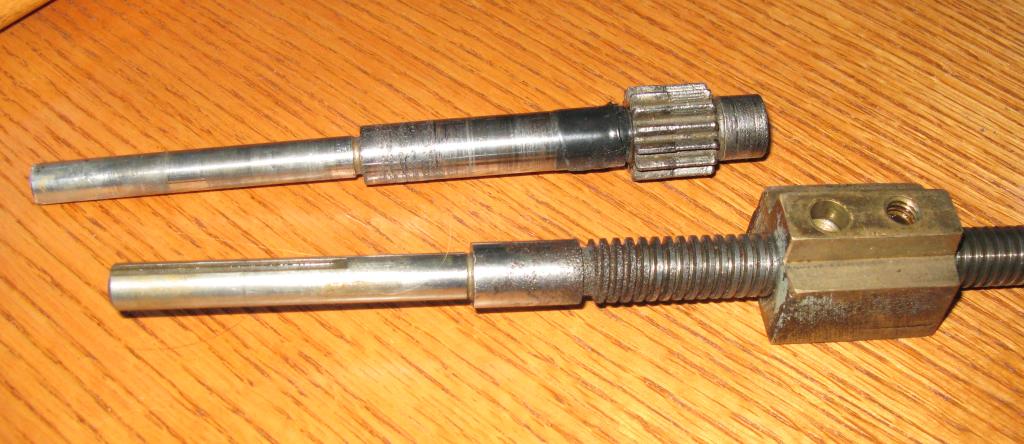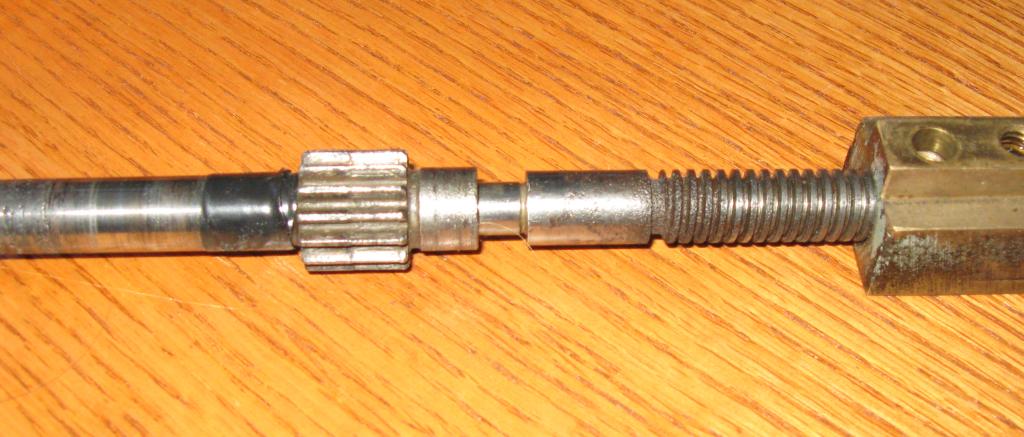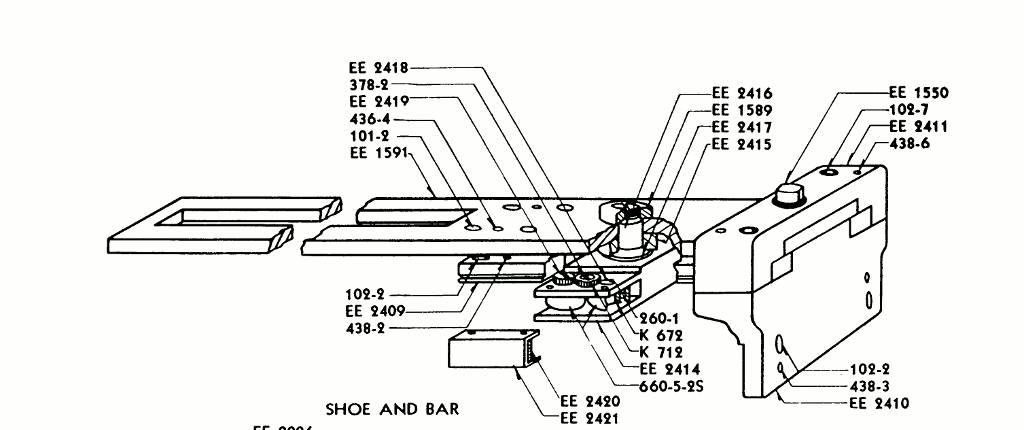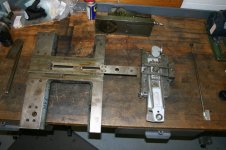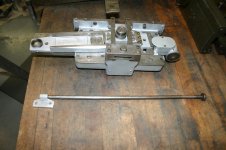The cross slide (right term?) has three bolts, for lack of a better description, that screw in from the top. (See photo.) The far left goes into a T-nut. The middle one in a pin that threads into the cross slide but does not thread into the cross-nut. The one on the right goes through the cross slide and then threads into the cross-nut. Why are all three of these there?

I'm guessing the one that does into the T-nut is so you can lock down the slide. And the far right one is needed to move the slide with the nut. But what does the middle one do? Is it for adjusting a clearance? I have the manual, but it is pretty useless as far as telling an owner how to make adjustment.
OK, one more question, which will forever brand me as a novice. The EE10 I bought had the taper attachment added at some time after the initial build (accord to Monarch.) The piece that holds the cross slide nut and screw simply (called the "draw bar" in the manual)simply lays in the apron. It is not attached at all and can easily slide left/right. There is a large hole on the right side of the draw bar (in the photo) that fits over a equally sized dowel on the taper attachment, and the taper attachment is firmly bolted to the apron. So that is what, I assume, keeps the draw bar from moving.

What did a lathe without the taper attachment have to anchor the end of the slide screw? I'm sure this is laughably obvious to everyone, but I haven't found any photos on the Net that show the back side of the apron.

I'm guessing the one that does into the T-nut is so you can lock down the slide. And the far right one is needed to move the slide with the nut. But what does the middle one do? Is it for adjusting a clearance? I have the manual, but it is pretty useless as far as telling an owner how to make adjustment.
OK, one more question, which will forever brand me as a novice. The EE10 I bought had the taper attachment added at some time after the initial build (accord to Monarch.) The piece that holds the cross slide nut and screw simply (called the "draw bar" in the manual)simply lays in the apron. It is not attached at all and can easily slide left/right. There is a large hole on the right side of the draw bar (in the photo) that fits over a equally sized dowel on the taper attachment, and the taper attachment is firmly bolted to the apron. So that is what, I assume, keeps the draw bar from moving.

What did a lathe without the taper attachment have to anchor the end of the slide screw? I'm sure this is laughably obvious to everyone, but I haven't found any photos on the Net that show the back side of the apron.


